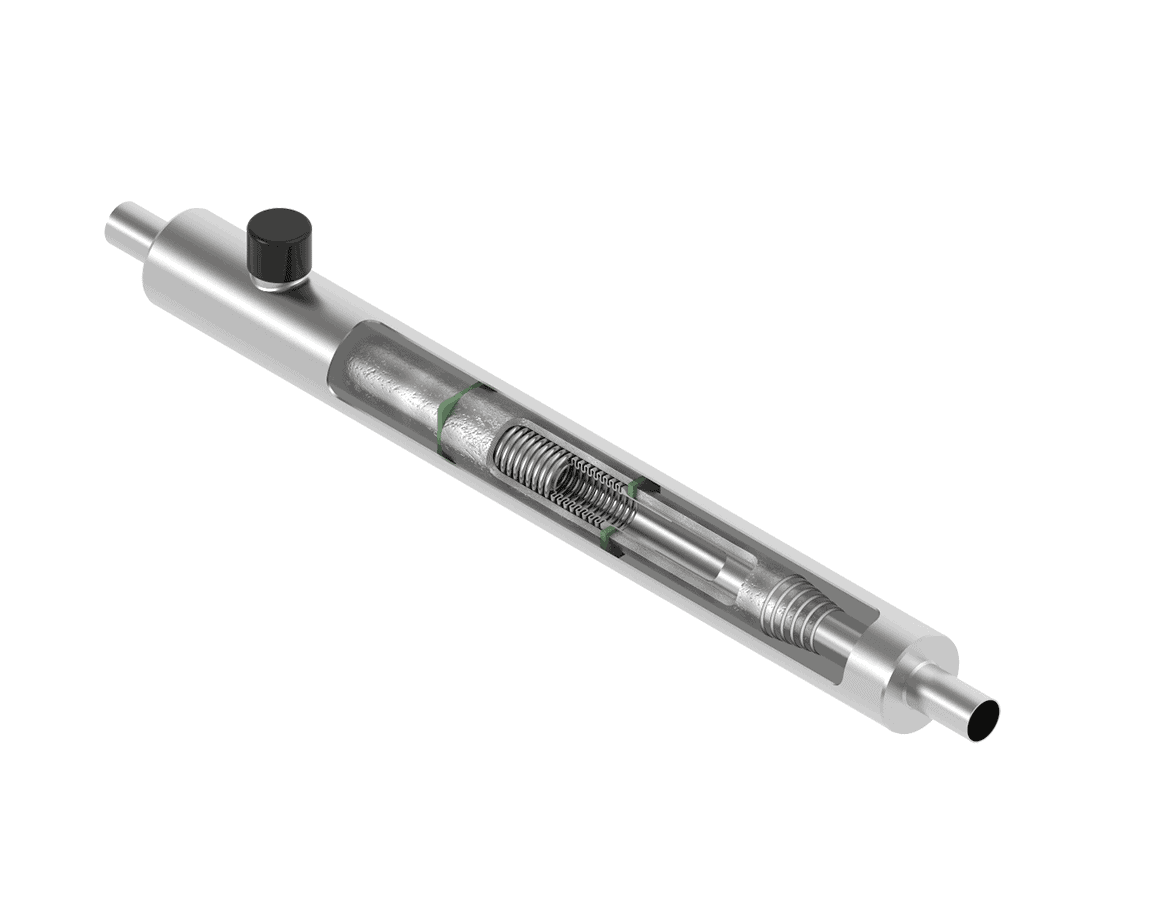Vacuum insulated transfer lines (LH2 VIP)
Specifications
Because liquid hydrogen must be transported at the extremely low temperature of -252.9 ℃, the use of transfer lines with optimal insulation is essential. The technology that precisely provides the insulation value, quality, and safety required to transport liquid hydrogen is vacuum technology.
Vacuum insulated transfer lines (Vacuum Insulated Pipelines LH2 VIP) have a double wall; the air between the walls is sucked out. The two walls never touch because spacers keep them apart. This creates a vacuum space and a pressure difference between the vacuum and outside air.
The use of vacuum technology keeps much of the surrounding heat out of a pipe or application, minimizing thermal heat losses and preventing ice build-up.
A vacuum insulated liquid hydrogen transfer line is a rigid pipe with a slim design. All coils are prefabricated for fast and efficient installation. In addition, the pipes are made of stainless steel so that the structures will last for years without any problems.
Application
Vacuum insulated transfer lines (LH2 VIP) are used in almost every liquid hydrogen project in the energy sector, the mobility industry, and all other industries in which liquid hydrogen is used. The transfer lines form the connection between storage vessels and applications or between production sites and transportation vehicles.
Moreover, vacuum insulated transfer lines (LH2 VIP) are suitable for hydrogen and LNG. Producers who want to switch from LNG to liquid hydrogen in the future can therefore continue to use the same infrastructure. Of course, in this case, all the standards and requirements for liquid hydrogen must be met.
Related products
Installation of vacuum insulated transfer lines (LH2 VIP) requires some (possibly) additional products:
- Johnston couplings (plug-in) which are easy to install using a male and a female connector. Welding is not required for this type of coupling.
- Welding couplings with vacuum insulation. Welding couplings are extremely sturdy and 100% leakproof. However, they are not as easy to install and reposition as Johnston couplings; on-site welding is required.
- A universal pipe end allows welding to any fitting, flange, or application.
Design
All vacuum insulated transfer lines (LH2 VIP) are made of stainless steel. They are equipped with high-vacuum insulation, and all welding is done to the highest standard.
Because the inner pipe becomes significantly colder than the outer pipe, it shrinks several millimeters per meter when it is in use. All pipes are equipped with a so-called compensator to prevent tension resulting from this. This flexible section safely absorbs the shrinkage of the inner pipe.
Vacuum insulated liquid hydrogen transfer lines have a diameter (of the process line) of up to 8″ and are suitable for standard design pressures up to PN25.
Engineering services
In addition to our standard vacuum insulated transfer lines for liquid hydrogen (LH2 VIP), Demaco also provides custom-made solutions.
Larger diameters or other specific requirements? No problem. Our experts are happy to advise on the best transfer lines for any specific project and ensure that a product or project perfectly matches the customer’s requirements.
